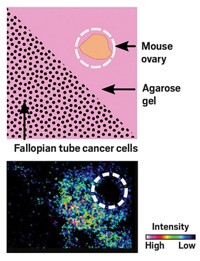Advertisement
Grab your lab coat. Let's get started
Welcome!
Welcome!
Create an account below to get 6 C&EN articles per month, receive newsletters and more - all free.
It seems this is your first time logging in online. Please enter the following information to continue.
As an ACS member you automatically get access to this site. All we need is few more details to create your reading experience.
Not you? Sign in with a different account.
Not you? Sign in with a different account.
ERROR 1
ERROR 1
ERROR 2
ERROR 2
ERROR 2
ERROR 2
ERROR 2
Password and Confirm password must match.
If you have an ACS member number, please enter it here so we can link this account to your membership. (optional)
ERROR 2
ACS values your privacy. By submitting your information, you are gaining access to C&EN and subscribing to our weekly newsletter. We use the information you provide to make your reading experience better, and we will never sell your data to third party members.
Analytical Chemistry
Nanorods Tag Tumors For Surgery
Combo of photoacoustic and Raman imaging locates oblong gold nanoparticles taken up by ovarian tumors, aids excision
by Lauren K. Wolf
November 12, 2012
| A version of this story appeared in
Volume 90, Issue 46
Doctors in the future might be able to detect early-stage ovarian cancer with the help of rod-shaped gold nanoparticles, according to a study reported in ACS Nano (DOI: 10.1021/nn304347g). After injecting mice with the nanorods, researchers from Stanford University used a combination of photoacoustic imaging and surface-enhanced Raman spectroscopy (SERS) to image various types of ovarian tumors in the rodents and visualize them during surgery. Three hours after the injection, the team, led by Sanjiv S. (Sam) Gambhir, observed a peak photoacoustic signal from tumors in the mice that absorbed the nanorods. Then, during surgery, the researchers used SERS imaging to identify the boundaries of those tumors and ensure complete removal of the troublesome tissue. The SERS signal comes from a near-infrared dye bound to the outsides of the nanorods. This is the first time a combination of photoacoustic and SERS imaging has been used to find ovarian tumors in living mice, the researchers say. These two techniques complement one another because the former deeply penetrates tissue and the latter can sensitively detect molecular tags.





Join the conversation
Contact the reporter
Submit a Letter to the Editor for publication
Engage with us on Twitter